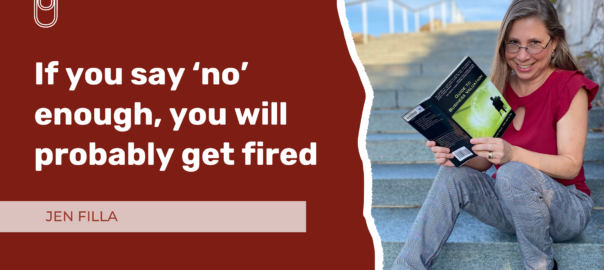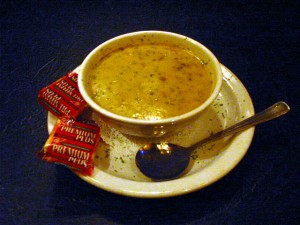Apologies to Shakespeare, but when it comes to the communication between major gift officers and prospect researchers, “What’s in a name?” is an important question worth paying attention to!
“What’s in a name? That which we call a rose by any other name would smell as sweet…” -William Shakespeare in Romeo and Juliet
I didn’t realize how important words are until I became a consultant and needed to clarify what services we offer our customers. If I fail in that communication, the consequence is either no work or an unhappy customer.
As it happens, wealth screenings are one of the most frequently misunderstood tools – and words – we use for major gift prospect identification at Aspire.
Notice how I defined that?
A wealth screening is a tool for major gift prospect identification.
However, all too frequently Aspire Research Group’s potential customers and current clients define it more like: Wealth screenings provide accurately matched profiles on prospects.
Why is there such a discrepancy in the definitions?
As much as I am indebted to the big vendors for flooding the nonprofit market with advertising and education on using wealth screenings, they have also perpetuated the myth of accurate electronic data matching and scoring. It makes for healthy sales revenue!
As a business owner I respect that simple marketing messages make sales. But as a prospect research professional it drives me nuts because you can have the very best, most amazing data-matching algorithms and scores and ratings and all things analytics – but it will not be enough!
It will not be enough because ultimately we are dealing with humans, not data.
Do any of these kinds of scenarios sound familiar?
- Visits with donors that are recorded in the database as actions with text, but no specific coding to know they were qualified or disqualified.
- Donors with common names, such as Robert Smith, but is it the billionaire or not?
- Researchers wanting to preserve data and not deleting things like gift opportunities on records when there was never a single two-way exchange.
- A great structure for coding prospect management in the database – that has old or just completely wrong information.
- Contact reports that indicate the prospect is ready for a solicitation, but no gift opportunity or prospect status was ever entered or updated, and in the hundreds of names in portfolio the prospect was unwittingly dropped like a hot potato.
- The data integrity team won’t allow development officers to update contact information on the record and now actively engaged prospects lack the basics such as current addresses or working telephone numbers.
I could go on and on. It’s all so human!
So, what now? Are wealth screenings worthless?
Heck no! Wealth screenings are an important and economical tool for major gift prospect identification. They are designed to help you segment and prioritize large groups of records and they perform better and better as the matching algorithms and accessible data improve.
The auto-matched profiles available with most wealth screenings are also really good. It’s just that they are not anywhere near 100% accurate. They were never meant to be! Matching algorithms keep getting better, but they can’t be perfect. They are good enough to get a great segment to focus on.
Because once you have a top major gift prospect segment, research can prioritize that much smaller list with quick research to confirm the information, and can deliver prospects to the development officer that have current, actionable data.
A screening by any other name would read as rich.
It doesn’t matter if you define a screening as an electronically matched algorithm or a researcher quickly scanning sources to confirm the algorithm’s findings — or both. Bottom line is that screenings help identify new major gift prospects.
One way to avoid confusion over the choices of words used is to describe the desired outcome. If you are a development officer and want to identify new major gift prospects, say that. If you say “I need a wealth screening” but a different technique would work better, you may not get the best outcome.
As Elisa Shoenberger describes in Top 5 Misconceptions of Prospect Identification, prospect identification is “using the knowledge of an organization, its best prospects, as well as an understanding of wealth and philanthropy to determine which prospects are the best ones.”
This goes for prospect research professionals, too! When someone wants new prospects identified, it’s not always wise to assume a wealth screening will be the best technique. Instead of focusing on a tool or technique, start asking questions about what they will do with the names, or how many names do they need, or other questions to widen the conversation.
And once everyone knows what is desired, then the discussion can progress to the tools and techniques that would best deliver the outcome of identifying major gift prospects.
Are you tasked with doing the work of major gift prospect identification? Check out the Prospect Research Institute’s workshop, Profiles vs. Screenings, where we dive into the difference and research for the desired outcome!








 I get it. Your organization is not going to ask for millions even if the prospect could give millions, so why should you spend your limited emotional energy trying to understand HNWIs (high net worth individuals) and global wealth trends? The clear majority of nonprofit organizations in the U.S., around 80%, have operating budgets of $1 million or less.
I get it. Your organization is not going to ask for millions even if the prospect could give millions, so why should you spend your limited emotional energy trying to understand HNWIs (high net worth individuals) and global wealth trends? The clear majority of nonprofit organizations in the U.S., around 80%, have operating budgets of $1 million or less.



